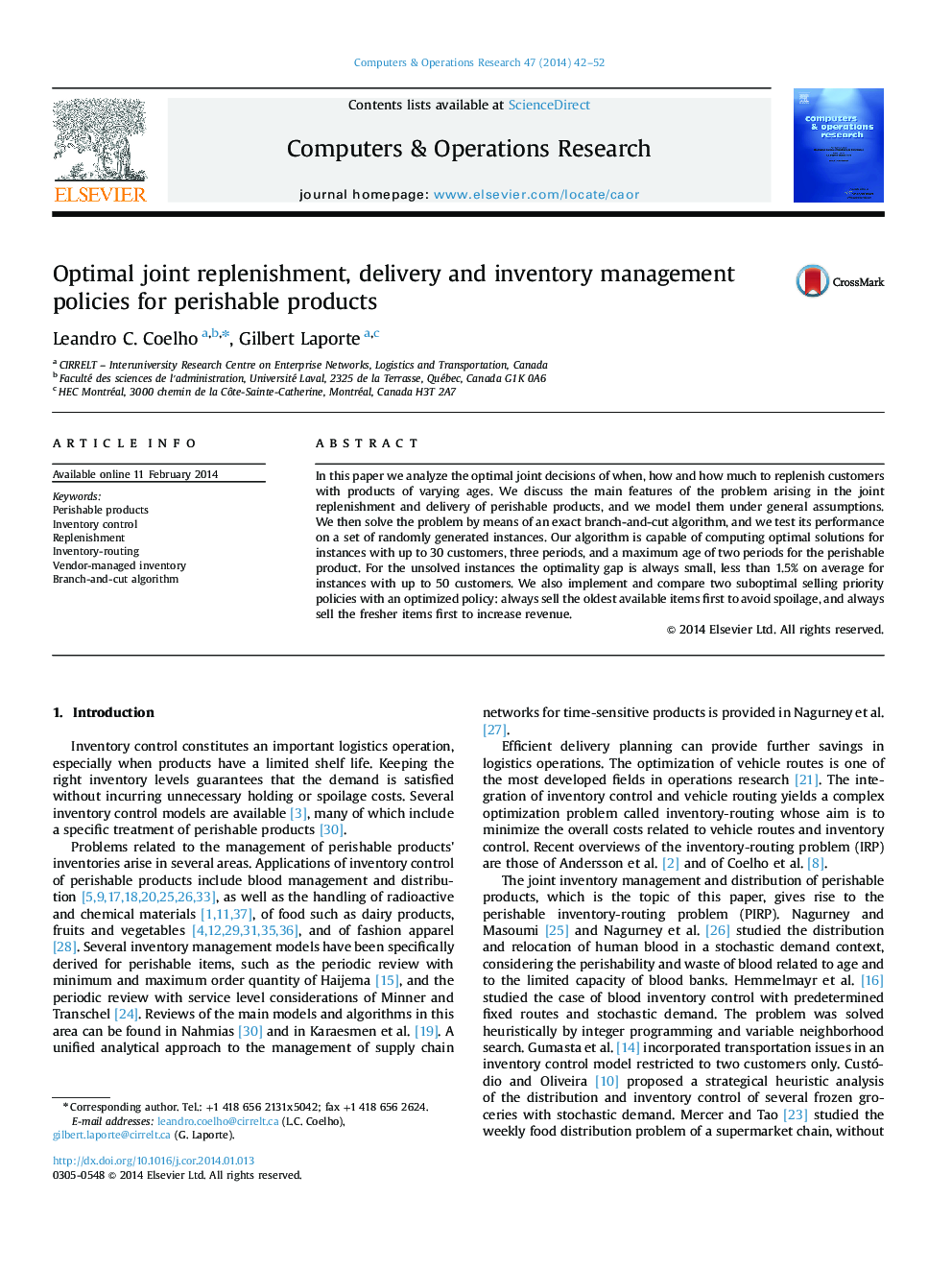| Article ID | Journal | Published Year | Pages | File Type |
|---|---|---|---|---|
| 475597 | Computers & Operations Research | 2014 | 11 Pages |
In this paper we analyze the optimal joint decisions of when, how and how much to replenish customers with products of varying ages. We discuss the main features of the problem arising in the joint replenishment and delivery of perishable products, and we model them under general assumptions. We then solve the problem by means of an exact branch-and-cut algorithm, and we test its performance on a set of randomly generated instances. Our algorithm is capable of computing optimal solutions for instances with up to 30 customers, three periods, and a maximum age of two periods for the perishable product. For the unsolved instances the optimality gap is always small, less than 1.5% on average for instances with up to 50 customers. We also implement and compare two suboptimal selling priority policies with an optimized policy: always sell the oldest available items first to avoid spoilage, and always sell the fresher items first to increase revenue.
